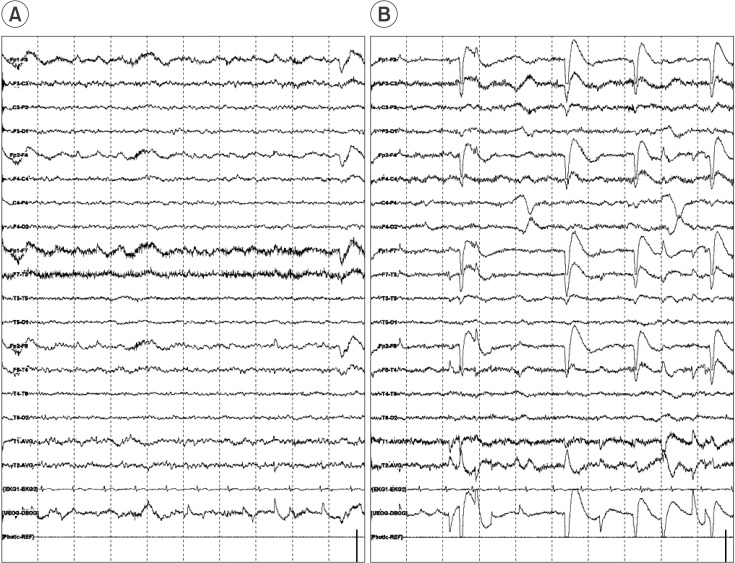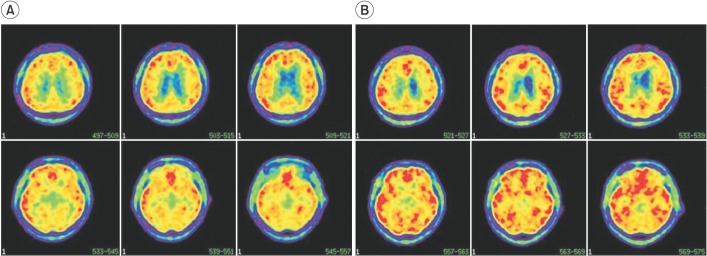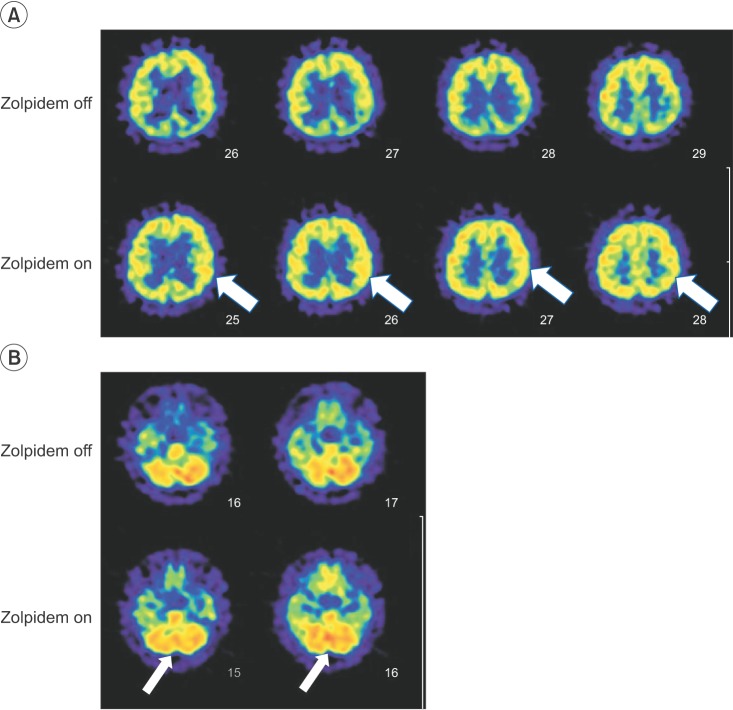Ann Rehabil Med.
2016 Feb;40(1):177-181. 10.5535/arm.2016.40.1.177.
Zolpidem-Induced Arousal by Paradoxical GABAergic Stimulation: A Case Report With F-18 Flumazenil Positron Emission Tomography and Single Photon Emission Computed Tomography Study
- Affiliations
-
- 1Department of Physical Medicine and Rehabilitation, Dongguk University College of Medicine, Goyang, Korea. bskwon@dumc.or.kr
- KMID: 2155182
- DOI: http://doi.org/10.5535/arm.2016.40.1.177
Abstract
- Zolpidem is a non-benzodiazepine drug that has selectivity for the gamma-aminobutyric acid (GABA) receptors. We experienced paradoxical effect of zolpidem in a 48-year-old male patient with hypoxic-ischemic brain injury after cardiac arrest. The patient was in stupor and could not communicate. His Glasgow Coma Scale (GCS) was E2M4V2 and Rancho Los Amigos (RLA) was grade III to IV. Zolpidem was prescribed to induce sedation but paradoxically, he became alert (GCS 15, RLA VII) and was able to communicate. The arousal lasted for 2 hours repeatedly following each administration of the medication. While he was alert, electroencephalogram showed the reversal of slow wave into beta range fast activity and F-18 flumazenil positron emission tomography (PET) showed increased GABAergic receptor activity in both frontoparietotemporal cortices. Single photon emission computed tomography (SPECT) also showed increased cerebral perfusion and reversal of cerebellar diaschisis.
MeSH Terms
Figure
Reference
-
1. Clauss R, Nel W. Drug induced arousal from the permanent vegetative state. NeuroRehabilitation. 2006; 21:23–28. PMID: 16720934.
Article2. Clauss RP, Guldenpfennig WM, Nel HW, Sathekge MM, Venkannagari RR. Extraordinary arousal from semi-comatose state on zolpidem: a case report. S Afr Med J. 2000; 90:68–72. PMID: 10721397.3. Whyte J, Rajan R, Rosenbaum A, Katz D, Kalmar K, Seel R, et al. Zolpidem and restoration of consciousness. Am J Phys Med Rehabil. 2014; 93:101–113. PMID: 24434886.
Article4. Thonnard M, Gosseries O, Demertzi A, Lugo Z, Vanhaudenhuyse A, Bruno MA, et al. Effect of zolpidem in chronic disorders of consciousness: a prospective open-label study. Funct Neurol. 2013; 28:259–264. PMID: 24598393.5. Brefel-Courbon C, Payoux P, Ory F, Sommet A, Slaoui T, Raboyeau G, et al. Clinical and imaging evidence of zolpidem effect in hypoxic encephalopathy. Ann Neurol. 2007; 62:102–105. PMID: 17357126.
Article6. Du B, Shan A, Zhang Y, Zhong X, Chen D, Cai K. Zolpidem arouses patients in vegetative state after brain injury: quantitative evaluation and indications. Am J Med Sci. 2014; 347:178–182. PMID: 23462249.
Article7. Clauss RP, Dormehl IC, Kilian E, Louw WK, Nel WH, Oliver DW. Cerebral blood perfusion after treatment with zolpidem and flumazenil in the baboon. Arzneimittelforschung. 2002; 52:740–744. PMID: 12442636.
Article8. Paul V, Subramanian EH, Rajasekaran K. Pharmacological evidence for a role of gamma-aminobutyric acid A receptor mechanism in modulating nitric oxide synthase activity in rat brain. Neurochem Int. 2001; 38:209–211. PMID: 11099778.
- Full Text Links
- Actions
-
Cited
- CITED
-
- Close
- Share
- Similar articles
-
- Nuclear Medicine Imaging in Rheumatic Diseases
- Positron Emission Tomography: Application in Pediatric Epilepsy
- Serotonin and Mental Disorders: A Concise Review on Molecular Neuroimaging Evidence
- A Case of Neuro-Behcet's Disease: Comparison of Neurological Symptoms with PET, SPECT, and MRI Findings
- Nuclear Neurology




